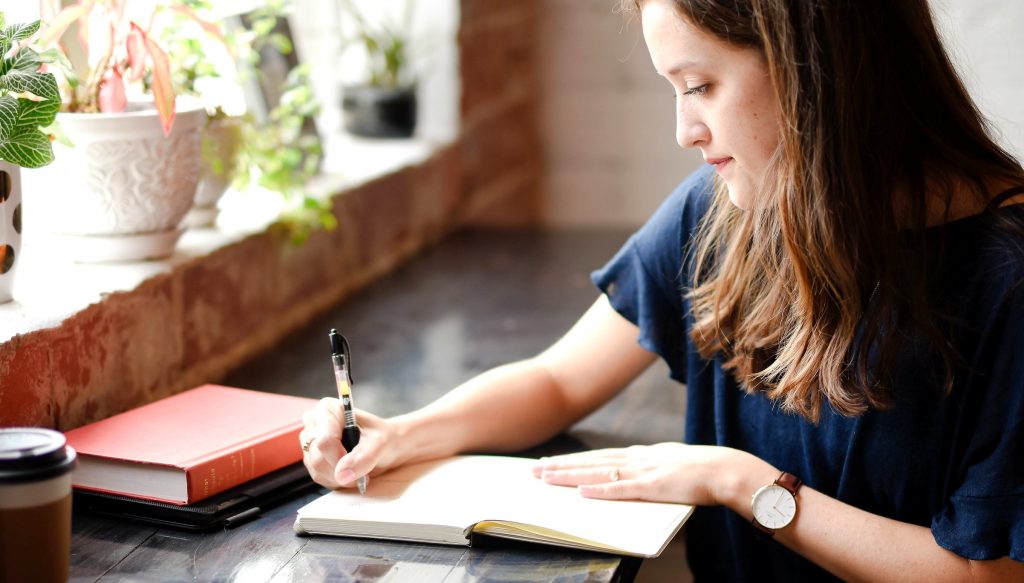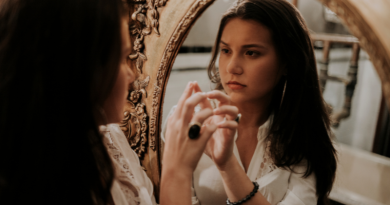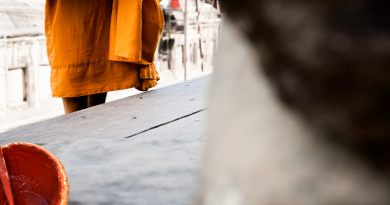Get lost doing what you love: 5 tips for entering a flow state
(Goalcast) Have you ever gotten lost in your work?
Did you “wake up” an hour or two later, more productive than ever, almost as if you were sent into a trance (albeit a controlled one)? Yeah, that’s a flow state.
But what exactly is flow? And why is it important? Is it just a state we enter as a result of doing work we love or is it something we can actually control to our benefit? That’s a common misunderstanding about flow and something I hope to clear up.
When a story is flying along, and I’m so into it that my ‘real’ world goes away, it can feel magical. I cease to be, my desk and computer ceases to be, and I am my character in his world. Psychologists call this a ‘flow state,’ and it’s better than publication, money, awards, fame.
– Nancy Kress
Wikipedia defines flow as:
A mental state of operation in which a person performing an activity is fully immersed in a feeling of energized focus, full involvement, and enjoyment in the process of the activity.
It’s a feeling virtually all of us have felt at some point in our life. Professional sports refers to it as “getting in the zone” and artists have referred to it as connecting with “the muse”.
Clearly, it’s a state we can all tap into and it’s something which we gain much from. It’s a state where we’re able to perform at our best because our reactions are fluid and immediate. In creative endeavors, we’re able to tap into a completely clear state of mind where our best ideas can flow out.
But can you control it? That’s the million-dollar question. Fortunately, the answer is yes.
For those looking to perform at their best more consistently, learning how to control this state of flow is a very worthwhile effort. But how do you do that? How can we construct an environment that allows us to trigger this state of flow more consistently? What can we do?
Luckily, while you can’t control when you enter a flow state, there’s quite a bit you can do to create the optimal environment that allows you to enter flow more often.
1. Do something you love and can get lost in
This is the first and most important prerequisite to entering a state of flow. In fact, this is the one and only requirement.
If you want to feel the joy of being in a state of flow and take advantage of the benefit of it, you need to be doing something you love. There’s no other way to go about it.
If you’re not already putting a good deal of your daily effort into pursuing what you love, now may be the time to start thinking about how you can do just that. That’s because this state of flow isn’t just about productivity or efficiency, or about coming up with your best ideas. Flow is a state that makes us happier too.
Those who more consistently enter a state of flow have been found to be happier in general, but it’s important to keep in mind that this thing needs to be a task you can immerse yourself in.
Unfortunately, philanthropy can’t put you into a flow state even if it’s your passion because it’s not a singular task you do with your mind and body. However, writing, exercising, crafting, designing, sports, and anything else that involves you doing some consistent task with your brain and physical body qualifies as something that can put you into a flow state.
2. Pick a challenging task that isn’t too difficult
This is likely the second major factor identified (so far) for helping you enter a flow state. The reason is because of what happens in the mind when we’re doing said task.
If the task is too easy, it’s not stimulating enough. If it’s too difficult than we’re straining the brain and constantly interrupting our process and train of thought, making it impossible to enter a state of flow.
But don’t misunderstand. The trick here is not to pick something easier, but rather, to get better at what you love doing. If you want to become a graphic artist, the better you become and the more automatic you can make your process for doing said activity, the more likely you’ll be to enter a state of flow.
Of course, challenging yourself and learning new things is an important part of life and any endeavor, so you can’t always put yourself in a position that makes it more likely for you to enter flow. However, if you’re focusing on your craft than much of your time can be ideal for crafting this perfect environment for entering flow.
3. Pick your most productive time
Now, it’s time to start working on the external circumstances that create the ideal “flow-inducing” environment.
First, you need to pick your most productive time of day and the time of day you tend to be the most creative (they’re usually the same). For some, this is the early morning. For others, this is late at night after everyone has gone to sleep. For others, it’s more about being opportunistic and taking advantage of whatever time you can get (if you have kids, etc.).
Whatever that time is for you, it’s important you find out what it is and take full advantage of it. If possible, center your primary activity in that time of day. If you’re a writer and you tend to have your best ideas in the morning, focus the brunt of your writing in that early morning time block. You’ll often find this makes you more productive by a multiplier of two to three.
4. Reduce distractions
Next, now that you’re doing something you love which offers just the right amount of mental stimulation and at the right time of day, you need to reduce distractions to optimize your ability to focus. This will greatly increase the likelihood of you entering a flow state.
Put a sign on your office door to not disturb you during this block of time, forward your calls or turn off your smartphone, use a browser extension that reduces distractions like Strict Workflow, play natural music like the sound of rain to block out noise if that’s an option (easily found on YouTube), and anything else you can think of that will help reduce distractions further.
Whatever you do, craft an environment that is the least likely to pull you away from the activity while you’re in the midst of it as possible.
5. Focus intensely on the topic for a stretch of time
Lastly, in order for any of this to work you need to give yourself enough time to focus on the task itself. Flow isn’t something you can immediately step into at a moment’s notice, it’s something which you need to fall into over a period of time given the optimum environment.
This could be a half-hour, a full hour, or even just ten minutes of focused activity in the right environment. If you’ve followed the previous steps you’ll not just be more likely to enter flow but you’ll be more likely to enter flow earlier as well.
Also, over time you’ll learn more about how long it takes for you to enter a flow state and can then adjust your process to optimize for this as well.
Flow is an experience that doesn’t just help us do our best work, it also makes us happier. If you’re a professional who sits down or gets up each day to get to work on your craft, no matter what that is, optimizing your own process and your working environment to increase the chance and frequency of you entering flow is well worth the effort spent.
Source: Goalcast
You may also like:
4 Methods of accessing the most creative forces of your mind




